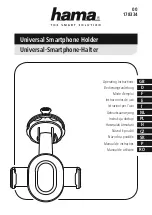
hwc_apstartup.fm
A31003-W1040-U101-1-7619, July 2006 DRAFT
HiPath Wireless Controller, Access Points and Convergence Software V4.0, C10/C100/C1000 User Guide
73
Configuring the wireless AP
Discovery and registration overview
5.2.2
Registration after discovery
Any of the discovery steps 2 through 5 can inform the wireless AP of a list of multiple IP
addresses to which the wireless AP may attempt to connect. Once the wireless AP has
discovered these addresses, it sends out connection requests to each of them. These requests
are sent simultaneously. The AP will attempt to register only with the first which responds to its
request.
When the wireless AP obtains the IP address of the HiPath Wireless Controller, it connects and
registers, sending its serial number identifier to the HiPath Wireless Controller, and receiving
from the HiPath Wireless Controller a port IP address and binding key.
Once the wireless AP is registered with a HiPath Wireless Controller, the wireless AP must be
configured. After the wireless AP is registered and configured, it can be assigned to a Virtual
Network Segment (VNS) to handle wireless traffic.
5.2.2.1
Default AP configuration
Default AP configuration simplifies the registration after discovery process. Default AP
configuration acts as a configuration template that can be automatically assigned to new
registering APs. The default AP configuration allows you to specify common sets of radio
configuration parameters and VNS assignments for APs. For more information, see Section
5.5.2, “Configuring the default AP settings”, on page 83.
5.2.3
Understanding the wireless AP LED status
When the wireless AP is powered on and boots, you can follow its progress through the
registration process by observing the LED sequence described below.
The Status LED (center) also indicates power—unlit when unit is off, and green (solid) when
the AP has completed discovery and is operational.
Figure 4
Wireless AP LED
7
Never disconnect a wireless AP from its power supply during a firmware upgrade.
Disconnecting a wireless AP from its power supply during a firmware upgrade may
cause firmware corruption rendering the AP unusable.
















































